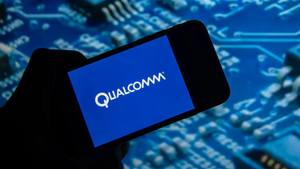
New York, NY – October 16, 2025 – In a landmark move poised to reshape the digital asset landscape, Sony Bank, a prominent financial institution largely owned by Sony Group (TYO:6758), has formally applied for a U.S. national banking license. The application, submitted through its New York-based subsidiary Connectia Trust, was made public by the Office of the Comptroller of the Currency (OCC) on October 10, 2025. This strategic maneuver signals a significant foray by a traditional finance giant into the burgeoning U.S. stablecoin market, with the explicit intention of issuing a fully dollar-backed stablecoin and offering comprehensive digital asset custody services.
The announcement has sent ripples across the cryptocurrency ecosystem, sparking immediate discussions about the convergence of traditional finance (TradFi) and decentralized finance (DeFi). While the OCC’s review process is ongoing, the mere prospect of a globally recognized entity like Sony entering the stablecoin arena has been met with cautious optimism and intense speculation. This development is particularly significant as it aligns with the recently enacted “Guiding and Establishing National Innovation for U.S. Stablecoins Act (GENIUS Act)” of July 2025, which has provided a much-anticipated federal regulatory framework for stablecoin issuers. Sony Bank's proactive step underscores a growing institutional confidence in regulated digital assets and could serve as a powerful catalyst for broader mainstream adoption.
Market Impact and Price Action
The announcement of Sony Bank's (TYO:6758) stablecoin ambitions, coupled with the regulatory clarity provided by the GENIUS Act, is poised to usher in a new era of market dynamics within the cryptocurrency space. While the application is still under OCC review, the mere prospect of a globally trusted brand entering the fray has already begun to shift sentiment, particularly within the stablecoin sector. Analysts anticipate a significant boost in institutional confidence, potentially expanding the stablecoin market capitalization from its current robust figure of over $312 billion to an estimated $400 billion by early 2026. This growth would be fueled by traditional financial institutions and corporate clients who have historically been hesitant due to regulatory ambiguities.
The existing stablecoin landscape, largely dominated by Tether (USDT) and Circle (USDC), is expected to face intensified competition. Sony Bank's dollar-backed stablecoin, backed by its reputable brand and stringent regulatory compliance under the GENIUS Act's 100% reserve mandate, could attract a substantial share of institutional capital seeking highly regulated and transparent digital assets. This increased competition is likely to drive innovation and potentially pressure existing issuers to enhance their own transparency and auditing practices, thereby reinforcing overall stablecoin peg integrity and reducing the risk of de-pegging events.
Furthermore, the introduction of a Sony Bank stablecoin is expected to ignite a surge in overall stablecoin trading volume and liquidity. Traditional financial institutions command vast capital pools and extensive client networks. As these resources are directed towards stablecoin adoption for cross-border payments, corporate treasury management, and other financial services, the depth and efficiency of the stablecoin market will significantly increase. This influx of institutional liquidity will not only benefit the stablecoin market directly but also serve as a crucial "on-ramp" for traditional capital into the broader cryptocurrency ecosystem. Major cryptocurrencies like Bitcoin (BTC), currently trading in the range of $111,000 to $115,000, could see indirect positive impacts. With sustained institutional inflows, some analysts project Bitcoin could reach $120,000 to $150,000 by year-end 2025, and Sony Bank's move could further bolster this trend by providing a trusted gateway for new investors.
The long-term implications suggest a modernization of global payment systems. Stablecoins issued by regulated entities like Sony Bank offer the potential to drastically reduce transaction costs and accelerate settlement times compared to traditional banking rails. This efficiency gain could attract businesses seeking more agile and cost-effective cross-border solutions, further integrating digital assets into the global financial infrastructure. The move is a strong indicator that the convergence of TradFi and DeFi is not just theoretical but a rapidly accelerating reality, driven by regulatory clarity and institutional demand.
Community and Ecosystem Response
The crypto community's reaction to Sony Bank's (TYO:6758) stablecoin ambitions is a complex tapestry woven with threads of optimism, skepticism, and pragmatic acceptance. On platforms like X (formerly Twitter) and Reddit, discussions oscillate between fervent bullishness and ideological concerns. Many within the ecosystem view this move as a monumental validation of digital assets, signaling an irreversible march towards mainstream adoption and institutional confidence. The prospect of a global brand like Sony leveraging blockchain technology is seen by many as a powerful endorsement that will attract unprecedented liquidity and foster a more robust, mature ecosystem.
However, a significant segment, particularly among early adopters and those deeply committed to the ethos of decentralization, harbors reservations. These voices express concerns about the potential for increased centralization, heightened regulatory control, and a dilution of crypto's foundational principles of financial sovereignty and permissionless innovation. The debate often centers on finding a delicate balance: how can traditional finance harness the efficiency of blockchain without compromising the core tenets of the decentralized movement? Crypto influencers reflect this dichotomy, with some championing institutional adoption as a necessary driver for long-term growth and legitimacy, while others caution against the potential for power consolidation if traditional institutions become overly dominant.
For Decentralized Finance (DeFi) protocols, Sony Bank's initiative, operating under the strictures of the GENIUS Act, presents both opportunities and distinct challenges. On one hand, the influx of institutional capital into a highly regulated stablecoin market could drive significant demand and liquidity into underlying blockchain networks, potentially benefiting DeFi protocols built on those chains through increased transaction fees and validator rewards. The sheer volume of transactions and the expanded user base could provide a substantial boost to network activity.
Conversely, the GENIUS Act's explicit prohibition on interest-bearing stablecoins directly impacts a core functionality of many DeFi lending, borrowing, and yield-generating protocols. This regulatory constraint could lead to a bifurcation of the stablecoin market: regulated, non-interest-bearing stablecoins like Sony Bank's serving institutional and compliant use cases, while existing, potentially interest-bearing stablecoins continue to dominate the more permissionless and yield-focused DeFi landscape. Moreover, the emergence of bank-issued stablecoins, even if technically decentralized, reinforces a centralized control layer that some argue undermines the very essence of DeFi. The broader sentiment on crypto Twitter and Reddit reflects this tension, with many acknowledging the regulatory clarity brought by the GENIUS Act as crucial for market stability and consumer protection, yet simultaneously lamenting its potential to restrict innovation and the full utility of stablecoins within a truly decentralized financial system.
What's Next for Crypto
Sony Bank's (TYO:6758) application for a U.S. banking license to issue a stablecoin, coming on the heels of the GENIUS Act, sets the stage for a transformative period in the cryptocurrency market. In the short term, this move significantly bolsters the legitimacy of stablecoins, paving the way for a greater influx of institutional capital. As more traditional financial institutions witness a clear regulatory pathway and a reputable brand like Sony embracing digital assets, it will likely encourage similar ventures, driving further capital into the crypto ecosystem. This will intensify competition within the stablecoin market, challenging the dominance of existing players like Tether and Circle and potentially spurring innovation and efficiency across the sector.
The GENIUS Act's stringent requirements for 100% reserves, regular audits, and robust AML/CFT protocols will impose a new level of regulatory scrutiny and compliance focus. This environment will likely lead to a consolidation within the stablecoin market, as less compliant entities face pressure to adapt or exit. For the broader crypto market, the availability of more regulated, fully-backed stablecoins could introduce greater stability, offering traders additional low-volatility options and enhanced hedging strategies against market fluctuations. This also reinforces the U.S. dollar's pivotal role in the evolving digital finance landscape, positioning it as a cornerstone of U.S. financial power in the digital age.
Looking further ahead, the long-term implications point towards an accelerated integration of digital assets into traditional finance systems. The clear regulatory framework, coupled with the participation of global financial powerhouses, will facilitate advanced use cases such as real-time settlement, efficient cross-border treasury flows, and deeper, more compliant integration with decentralized finance (DeFi) protocols. Stablecoins are poised to revolutionize the global payments infrastructure, influencing international remittances and B2B settlements. Citi projects the stablecoin market could reach nearly $2 trillion by 2030, driven by the reallocation of U.S. cash and deposits into digital tokens and the replacement of international liquidity tools. This integration will also foster innovation in stablecoin design, underlying blockchain infrastructure, and new financial products built upon these regulated digital currencies.
The GENIUS Act, by establishing a framework for private stablecoins and implicitly favoring private sector-led digital currency innovation, signals a U.S. preference that could influence the global evolution of Central Bank Digital Currencies (CBDCs). Instead of a Fed-issued digital dollar, a diverse ecosystem of regulated private stablecoins might emerge. However, the projected growth necessitates the development of more robust infrastructure for on/off-ramping, cross-chain interoperability, and secure custody solutions. A critical long-term consideration remains the threat of quantum computing to blockchain encryption, requiring ongoing investment in quantum-resistant cryptographic solutions to safeguard the future of the digital asset ecosystem. Potential catalysts to watch include the swift approval of Connectia Trust's OCC Charter, further institutional entrants, and any global regulatory harmonization efforts.
Bottom Line
Sony Bank's (TYO:6758) strategic move to apply for a U.S. banking license to issue a dollar-backed stablecoin, under the fresh regulatory umbrella of the GENIUS Act, marks a pivotal moment for crypto investors and enthusiasts. The foremost takeaway is the significant enhancement of institutional legitimacy for digital assets. When a global conglomerate like Sony actively integrates stablecoins into its financial and potentially entertainment ecosystems, it sends an unmistakable signal that the crypto landscape is maturing and ready for mainstream institutional capital, potentially driving the stablecoin market capitalization from its current robust state past $400 billion by early 2026.
The GENIUS Act, enacted on July 18, 2025, provides crucial regulatory clarity, a factor that has historically been a major barrier for institutional participation. Its mandates—1:1 reserve requirements in highly liquid assets, stringent AML/KYC compliance, and the prohibition of direct interest from issuers—will fundamentally reshape the stablecoin market. While the interest prohibition might initially seem restrictive for some DeFi applications, it underscores a regulatory intent to position stablecoins primarily as reliable payment instruments rather than speculative investment vehicles. This clarity, combined with Sony's entry, will undoubtedly intensify competition, spurring innovation in stablecoin technology and potentially leading to more efficient, user-friendly offerings.
The long-term significance of this development for crypto adoption cannot be overstated. It represents a watershed moment where major global corporations are not merely observing but actively integrating digital assets into regulated financial services and consumer-facing products. This institutionalization, operating within clear regulatory guardrails, is paramount for building public trust and demonstrating the tangible utility of cryptocurrencies beyond speculative trading. The U.S. regulatory framework, hailed by some as potentially as transformative as the 1996 Telecom Act, sets a powerful precedent for global stablecoin regulation, potentially fostering greater international harmonization and interoperability. The ultimate vision points towards a future where regulated stablecoins serve as a foundational layer for a more efficient, inclusive, and tokenized global financial system.
Crypto adoption is clearly accelerating, transitioning from a niche technology to an integral component of the global financial infrastructure. The GENIUS Act, by providing clear rules, empowers large-scale players like Sony Bank to confidently innovate and push stablecoins into everyday transactions, blurring the lines between traditional and decentralized finance. The focus for crypto adoption is moving beyond speculative trading to practical, real-world utility, with regulated stablecoins serving as the reliable digital dollar for diverse applications. Investors and enthusiasts should closely monitor the OCC's decision on Connectia Trust NA's charter, the full implementation phases of the GENIUS Act (with key dates in July 2026, January 2027, and July 2028), the growth of the overall stablecoin market capitalization, and crucially, any announcements regarding Sony's stablecoin integration into its vast entertainment and digital services, including its Soneium blockchain. The responses from traditional banks to this evolving landscape, particularly regarding tokenized deposit offerings, will also be critical indicators of the pace of this financial revolution.
This article is for informational purposes only and does not constitute financial or investment advice. Cryptocurrency investments carry significant risk.






